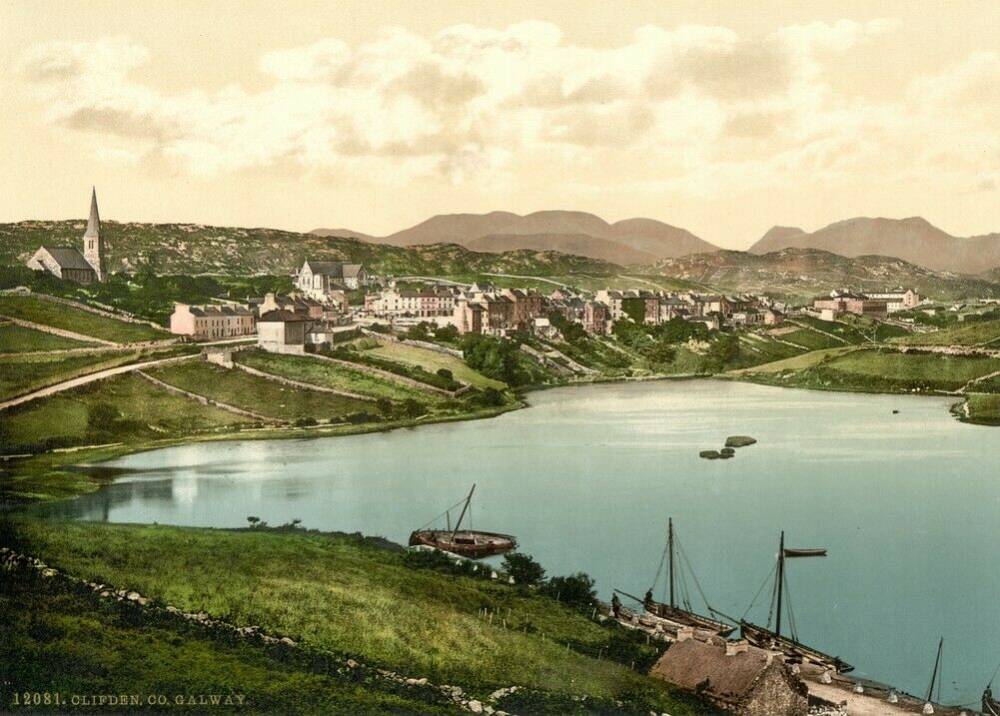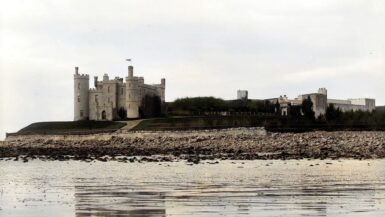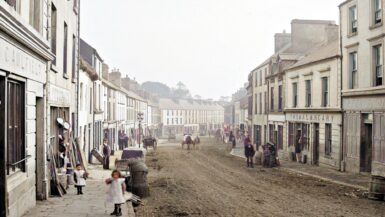The name Clifden means ‘An Clochán’ in Irish, or ‘Stepping Stones’. The town was founded at the start of the 19th century by John D’arcy (1785-1839) who lived in Clifden Castle (now in ruins). He inherited the estate when it was mostly used for fishing and farming.
In 1820, a failed potato crop caused suffering and D’arcy petitioned government in Dublin for assistance. This came in the form of a quay, built by engineer, Alexander Nimmo. A road to Galway was started and the town began to grow. When D’arcy died in 1839 the town had grown to 1,100 and supported 185 dwellings, 2 churches, 2 hotels, 3 schools, a police station, courthouse, gaol, distillery and 23 pubs.
Exports from Clifden included marble, corn, fish and kelp and for a time the town thrived. However, after John D’arcy’s death in 1839 his son, Hyacinth, took over the running of the estate and rows with the tenants escalated.
Clifden during the Great Famine
The towns prosperity came to a sudden halt when the famine started in 1845. Many people starved to death or emigrated and by 1848 up to 90% of the population were receiving government relief (assistant). In November 1848 Hyacinth D’arcy put the estate up for sale, which was purchased by Charles and Thomas Eyre or Somerset. Hyacinth became rector of Omey and Clifden.
Clifden’s place in modern technology
In 1905 a high powered transatlantic wireless telegraphy station was built 6km outside the town by Guglielmo Marconi, who wanted to minimise the distance to its sister station in Nova Scotia, Canada. The first point-to-point wireless service between Europe and the US commenced public service in 1907, with capability of transmitting 10,000 words. At its peak up to 200 people were employed at the station, including Jack Philips, who would later perish as Chief Radio Officer of the Titanic.
Later, in 1919 the first non-stop transatlantic flight by John Alcock and Arthur Brown crashlanded in a bog near Marconi’s transatlantic wireless station. Captain Alcock mistook the green bog for a meadow and the aircraft was destroyed as the landing gear sank into the ground on landing. Thankfully both Alcock and Brown sustained only minor injuries. They carried 800 letters which was the first ‘Atlantic aerial mail’.








Leave a reply